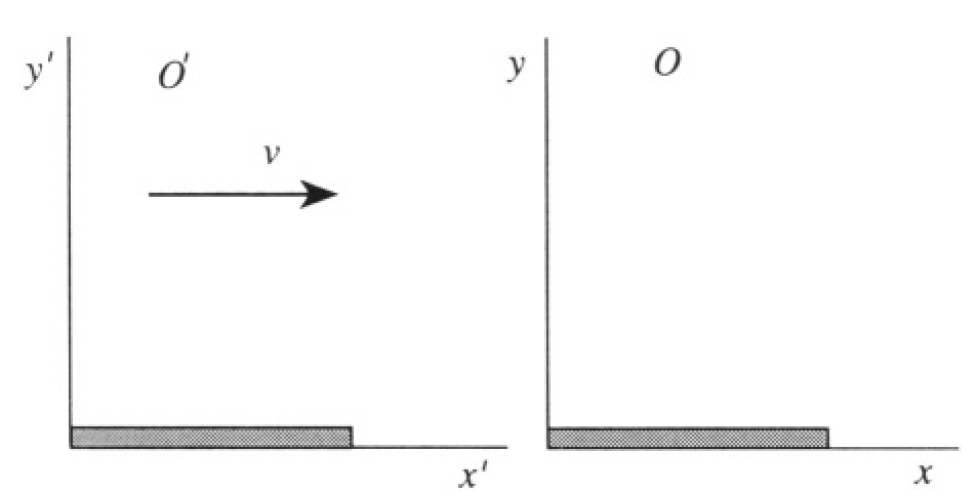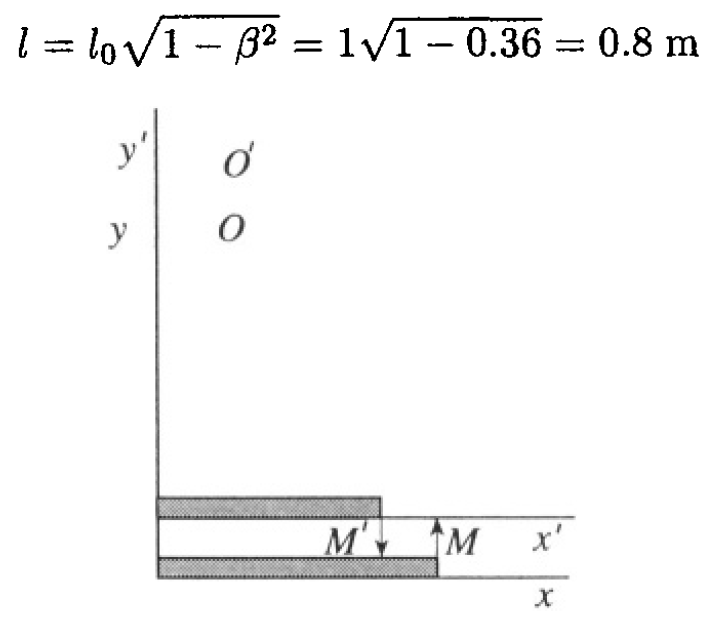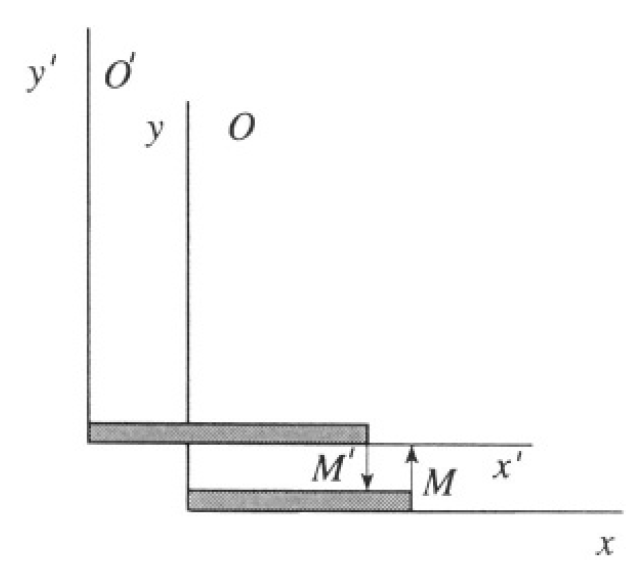
Marking Sticks
 المؤلف:
Sidney B. Cahn And Boris E. Nadgorny
المؤلف:
Sidney B. Cahn And Boris E. Nadgorny
 المصدر:
A GUIDE TO PHYSICS PROBLEMS
المصدر:
A GUIDE TO PHYSICS PROBLEMS
 الجزء والصفحة:
part 1 , p 33
الجزء والصفحة:
part 1 , p 33
 13-7-2016
13-7-2016
 1543
1543
Marking Sticks
Observer O' is travelling with velocity v = 0.6c in the x direction relative to observer O. Each observer has a meter stick with one end fixed at his origin and the other end fixed at x (or x') = 1m (see Figure 1.1). Each stick has a marking device (such as a spring-loaded pin) at the high x (or

Figure 1.1
x') end, capable of marking the other stick if it overlaps that stick when the marking devices are triggered. The two origins coincide at t = t' = 0. Both marking devices are triggered at t = 0.
a) According to O, who has the shorter stick? Which stick is marked and where?
b) According O' to who has the shorter stick? Prove by explicit derivation that O' agrees on the result of the marking experiment, including the position of the mark.
SOLUTION
a) According to observer O, the O' stick is Lorentz–contracted:

where l0 is the length of the stick in its rest frame. So observer O believes that the stick in O' is shorter. In this frame, the marking devices are triggered simultaneously at t = 0 when the origins of the two frames coincide (see Figure 1.2a). As shown, the O stick will be marked at x = 0.8 m (in the O frame, the marking device of O' is at x = 0.8 m)
b) According to observer O' the O stick is Lorentz–contracted:

Figure 1.2a

Figure 1.2b
so that observer O' believes that the O stick is shorter. In frame O' ,the triggering of the devices (happening at t = 0 in frame O) is no longer simultaneous. Actually, the device in frame O' is triggered first, and that is why this observer agrees with the result found in (a) (see Figure 1.2b). Indeed, from the Lorentz transformation of time, we can obtain the time in O' when his device is triggered:

So

The point in the O frame corresponding to the mark is

the same result as in (a).
 الاكثر قراءة في مواضيع اخرى
الاكثر قراءة في مواضيع اخرى
 اخر الاخبار
اخر الاخبار
اخبار العتبة العباسية المقدسة


